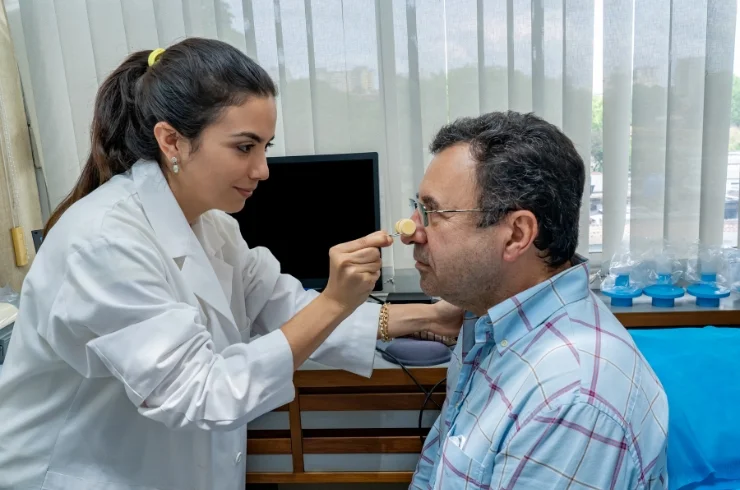DLCO (Diffusing Capacity of the Lungs for Carbon Monoxide)

DLCO (Diffusing Capacity of the Lungs for Carbon Monoxide) is a pulmonary function test that measures how well oxygen and other gases, such as carbon monoxide, move from the lungs into the bloodstream. It is a critical test for evaluating the efficiency of gas exchange in the lungs and can help diagnose and assess the severity of lung diseases, particularly those affecting the alveoli (air sacs) and the capillary network surrounding them.
How DLCO Works:
During the test, the patient inhales a small, controlled amount of carbon monoxide (CO) along with other gases, and then exhales. The amount of carbon monoxide that is absorbed by the blood is measured. Since carbon monoxide binds to hemoglobin in the blood in the same way oxygen does, it serves as a useful marker for assessing how efficiently gases are exchanged in the lungs. The test is typically done in a closed circuit, and the concentration of exhaled carbon monoxide is compared to the inhaled concentration to determine how much was absorbed into the blood.
Key Measurements:
- DLCO (ml/min/mmHg): This is the amount of carbon monoxide transferred to the blood per minute per mmHg of partial pressure. A lower DLCO value indicates impaired gas exchange and can be an indication of lung disease.
- VA (Alveolar Volume): This refers to the volume of the lungs involved in gas exchange and helps normalize the DLCO value for lung size.
Applications of DLCO:
- Diagnosing diseases: DLCO is helpful in diagnosing diseases that affect the alveolar-capillary interface, such as pulmonary fibrosis, emphysema, chronic obstructive pulmonary disease (COPD), and pulmonary hypertension.
- Assessing lung diseases: It is used to assess the severity of diseases like interstitial lung disease, where the ability of the lungs to exchange gases is impaired.
- Monitoring disease progression: DLCO can track how lung function changes over time, particularly in diseases affecting the lung’s ability to transfer gases.


